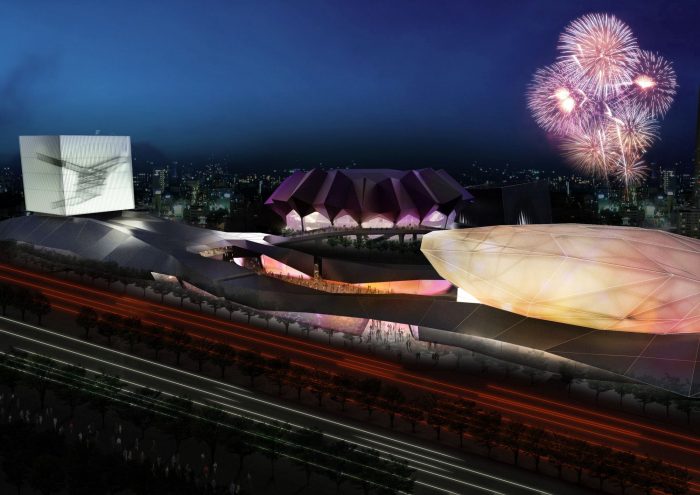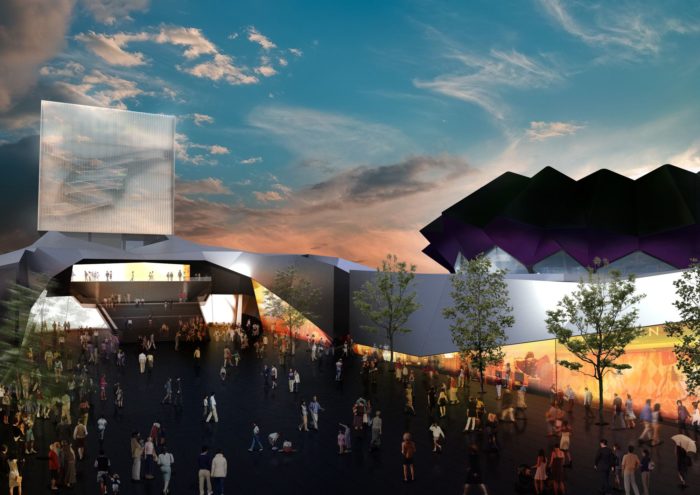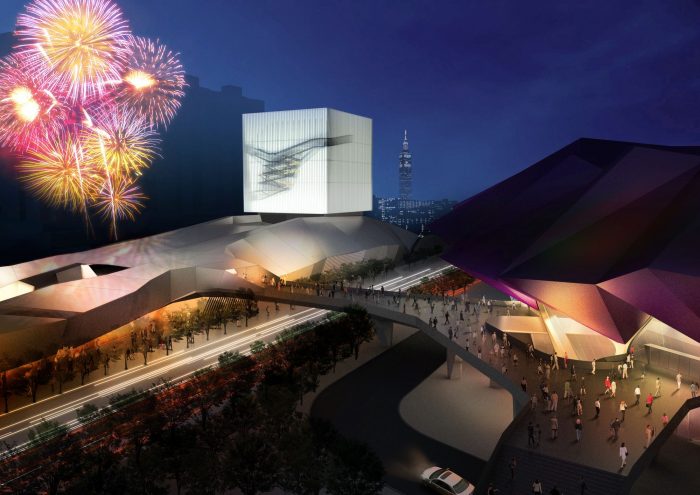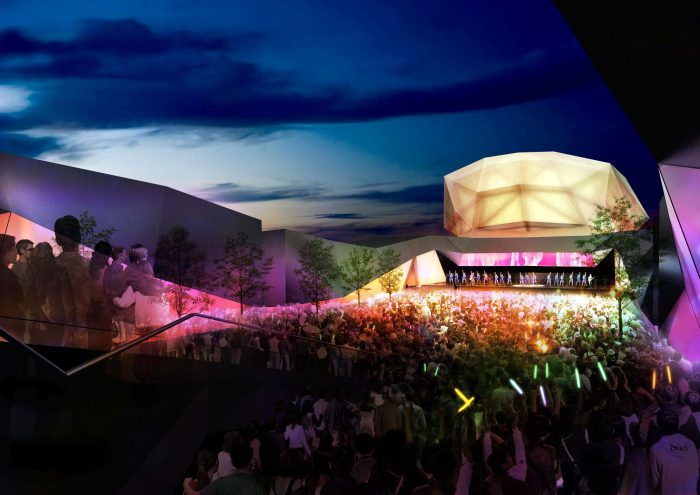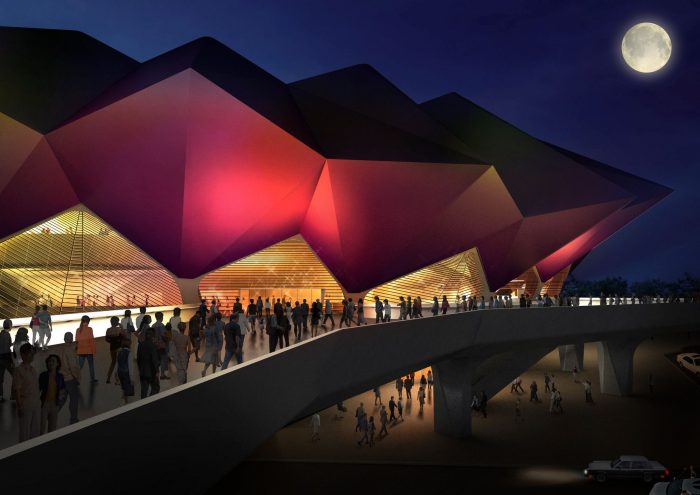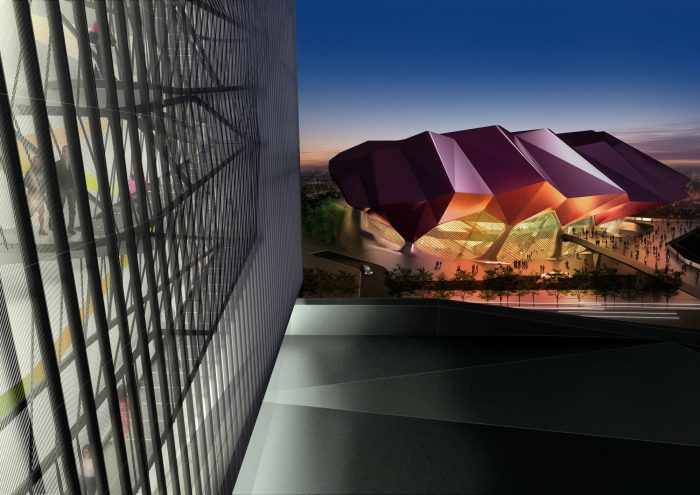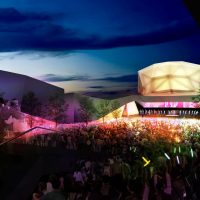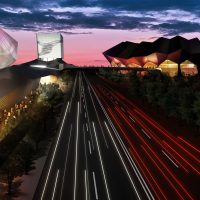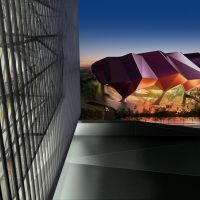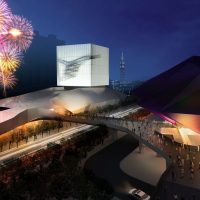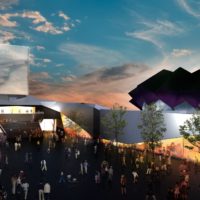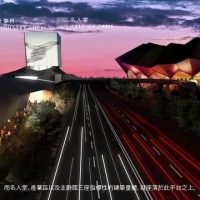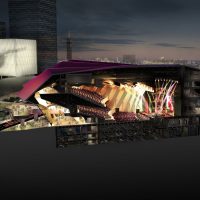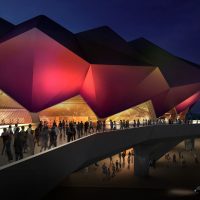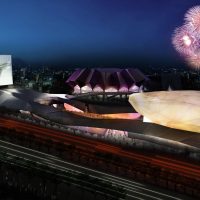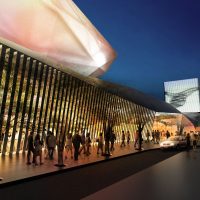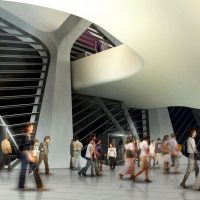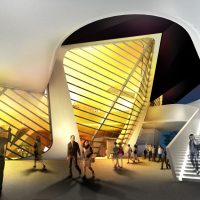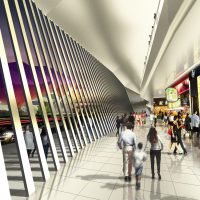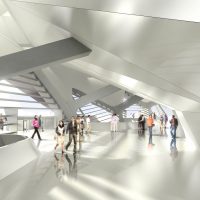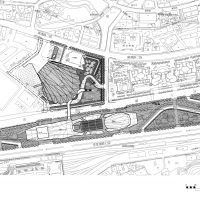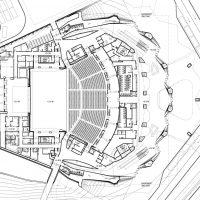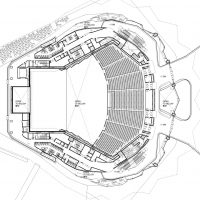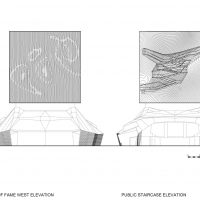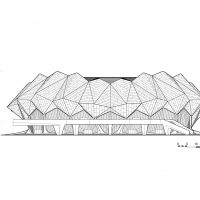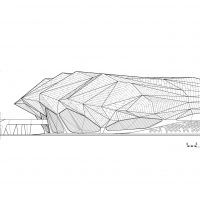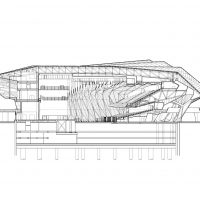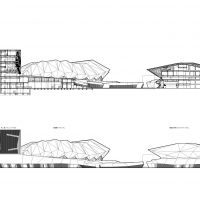The Taipei Pop Music Center will become a new global center for the music industry. It will speak to existing typologies of Taipei music and public space by linking to a larger set of citywide greenways, transport systems, and pedestrian bridges. It will be at once a platform for Taipei life and a world center for the music industry. Pop music, while a global phenomenon, is regional in its definition. The East Asian music scene typifies the phenomenon; while it crosses borders and cultures and dialects, it nevertheless has produced styles and genres with distinct transnational form and appeal.
Though many aspects of pop culture exist in a hyper-technological or virtual realm, there is a need for a defined physical hub dedicated to the production and reception of pop. Pop music, while a global phenomenon, is regional in its definition. The East Asian music scene typifies the phenomenon; while it crosses borders and cultures and dialects, it nevertheless has produced styles and genres with distinct transnational form and appeal. Though many aspects of pop culture exist in a hyper-technological or virtual realm, there is a need for a defined physical hub dedicated to the production and reception of pop.
Pop music, while a global phenomenon, is regional in its definition. The East Asian music scene typifies the phenomenon; while it crosses borders and cultures and dialects, it nevertheless has produced styles and genres with distinct transnational form and appeal. Though many aspects of pop culture exist in a hyper-technological or virtual realm, there is a need for a defined physical hub dedicated to the production and reception of pop.
A Gradient of mixed-use spaces, from the fully public realm to the interior of the auditorium, allows the visitor to partake of the event dynamic however they choose to visit this complex. Whether they plan a night of music or are browsing the myriad shops, markets, cafes, and restaurants, the complex will be a 24-hour attraction independent of the schedule of performances in the theaters. The image of the Taipei Pop music Center must be based on the same transnational values of the music. Like Times Square, Taipei’s Pop Music Center will exist simultaneously as a mediated icon and as a real world venue. The TPMC will challenge the rigidity of traditional performance space, RUR proposes a synthesis of park, theater and public space. The evolving culture of pop has superseded the possibilities of traditional performance venues, The previous century’s models for event spaces were largely adaptive appropriations of old theatrical forms: stadia, concert halls, or open fields (Woodstock).
While such adaptive models continue to host isolated events, they fail to provide an adequate context, identity or home base for the new ways producing, performing and consuming pop music. Only a “branded” piece of city, a flagship venue, can accomplish this sleight of hand: an immediately recognizable work that functions as an organic part of Taipei’s everyday life. It is therefore important to concentrate particular icons and connect them into a super-form that creates a site that will become synonymous with the Pop music industry.
We propose creating a new elevated public ground, which will bridge the two building sitespresently divided by Xinsheng Rd Corridor. This will effectively join the three major theaters and create a coherent public space distinct yet connected to the life of the city. The elevated public space is a pedestrian zon3 that will serve as forecourt to the concert hall, outdoor concert space and the street of clubs which houses the museum and hall of fame, The public space is in itself a focus for outdoor events, surrounded by cafes, restaurants and shops. Here, the spectacle of pop music can be celebrated and broadcast to the world.
The expansion and programmatic diversification of this threshold and junction was key. We are providing the substrate – the canvas for pop events now and for unforseen events in the future. Our project therefore acts as a lens allowing for the focus of attention and flows of people, young and old on different paths of the site within different ambient zones. Creating a cultural hub also invites “ambient” users, those who may not be specifically attending a planned concert or event, to use and engage the TPMC; it will function like a park or center of commerce – a destination to frequent even when no specific itinerary exists. The notion of cultural venue has been fundamentally rethought. Gone is the concert hall as a closed monument. Instead of a mere façade, we sought to create an expanded zone between public and concert. The expansion and programmatic diversification of this threshold and junction was key.
A Gradient of mixed-use spaces, from the fully public realm to the interior of the auditorium, allows the visitor to partake of the event dynamic however they choose to visit this complex. Whether they plan a night of music or are browsing the myriad shops, markets, cafes, and restaurants, the complex will be a 24-hour attraction independent of the schedule of performances in the theaters. The traditional outdoor venues for mass events such as stadia, while highly effective as machines for concentrating large audiences, expose their mono-functionality during down times. Ultimately they become dead voids in the city that only vitiate the neighborhoods around them. We propose a new hybrid urban morphology that has the capacity to foster myriad types of events and public uses ensuring 24 hour vitality.
The landscape of the complex will blend the beauty of the traditional rice ponds of Taiwanwith a green energy system, A geothermal pond cooling system will be located in a water feature to join Taipei’s natural history with its sustainable future, The cooling pond will have geothermal plates submerged in them to reject building heat, These plates replace traditional cooling towers, which are large, require maintenance, and use energy, A closed-loop pond heat refection system uses a sealed circuit if warn condenser water which passes through cooler pond water, thus rejecting its heart, Additionally, rice ponds placed around the site will provide passive cooling to patrons nearby as the consistent Taipei winds move over the water. The form of our outdoor performance space is a hybrid of circus and city, In effect our design synthesizes what took centuries to accomplish, as for example in the shift from the Roman “Circus Agonalis” to the Piazza Navona.
With the mobile stage, our design can adapt to a spectrum of event scales and public uses and mass events, accommodating audiences of 16,000 people to smaller shows operating simultaneously or with other functions such as day or night markets. As opposed to a singular or inflexible performance venue, the TPMC allows both highend, in-demand performances to coexist with small, up-and-coming artists. This has consequences not only for the diversity of concert-goers that the center will attract, but can also have important collaborative effects on pop music production in Taipei. We envision a coherent environment, not merely a collection of performance spaces but a vibrant new part of the city itself. As Hollywood is to world cinema so the Taipei Pop Music center will be to Asian Pop.
- Courtesy of Reiser + Umemoto, RUR Architecture PC
- Courtesy of Reiser + Umemoto, RUR Architecture PC
- Courtesy of Reiser + Umemoto, RUR Architecture PC
- Courtesy of Reiser + Umemoto, RUR Architecture PC
- Courtesy of Reiser + Umemoto, RUR Architecture PC
- Courtesy of Reiser + Umemoto, RUR Architecture PC
- Courtesy of Reiser + Umemoto, RUR Architecture PC
- Courtesy of Reiser + Umemoto, RUR Architecture PC
- Courtesy of Reiser + Umemoto, RUR Architecture PC
- Courtesy of Reiser + Umemoto, RUR Architecture PC
- Courtesy of Reiser + Umemoto, RUR Architecture PC
- Courtesy of Reiser + Umemoto, RUR Architecture PC
- Courtesy of Reiser + Umemoto, RUR Architecture PC
- Courtesy of Reiser + Umemoto, RUR Architecture PC
- Courtesy of Reiser + Umemoto, RUR Architecture PC
- Main Hall 1F Plan
- Main Hall 2F Plan
- Hall of Fame Elevations
- Main Hall Elevation
- Main Hall Elevation
- Main Hall Longitudinal Section
- South Site Longitudinal Section & Elevation


